The endless search for a better ergonomic keyboard

In a previous post I talked about the first ever ergonomic keyboard that I used that actually made typing more comfortable for me. Over time, the USB dongle and the low tenting angle of the Sculpt became frustrating. If you lose or forget the dongle… you can’t use the keyboard… which is a real dealbreaker.
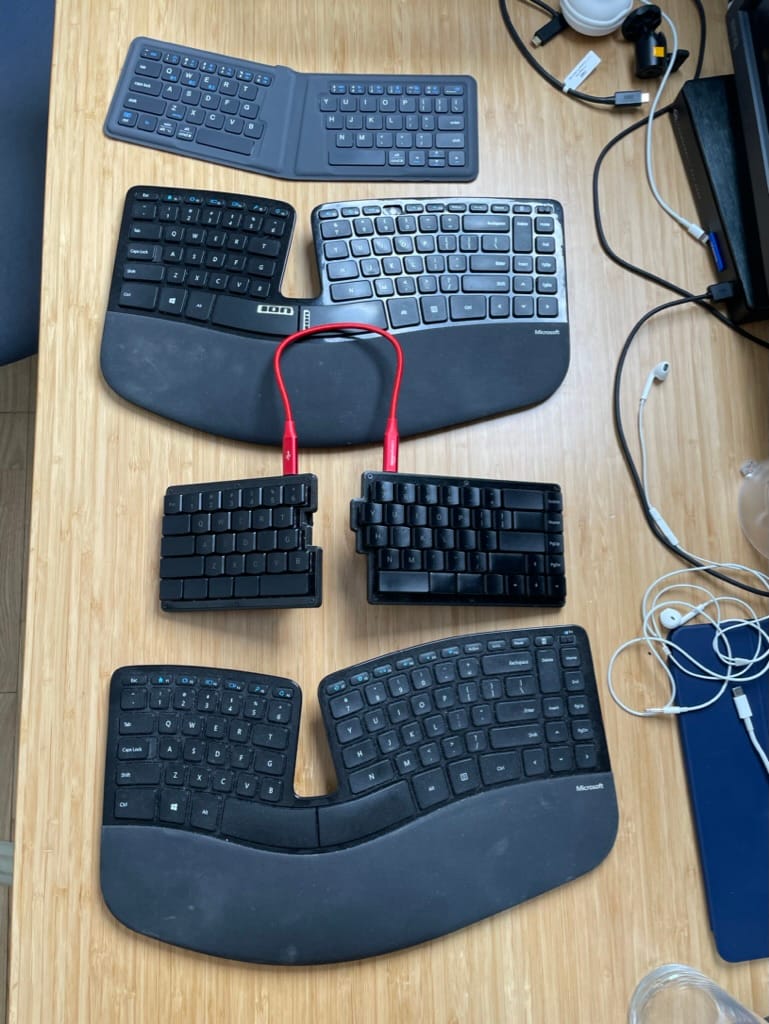
So I set off in search of a replacement with the following requirements:
- standard key layout
- variable angle tenting
- bluetooth
- wrist rests
- low profile keys
At first pass, there weren’t many options that met these needs. Ergodox and Dygma make a lot of keyboards that are ortholinear, or use traditional mx keys, or are super expensive. It just took me a while to find more suitable options.
iClever
The first thing that made me look for a replacement for my sculpt was travel. In 2020, when I pretty much stopped going into an office, I started working from a variety of different locations and required a keyboard that traveled well. From a comfort perspective, I really wanted the split and for it to tent.
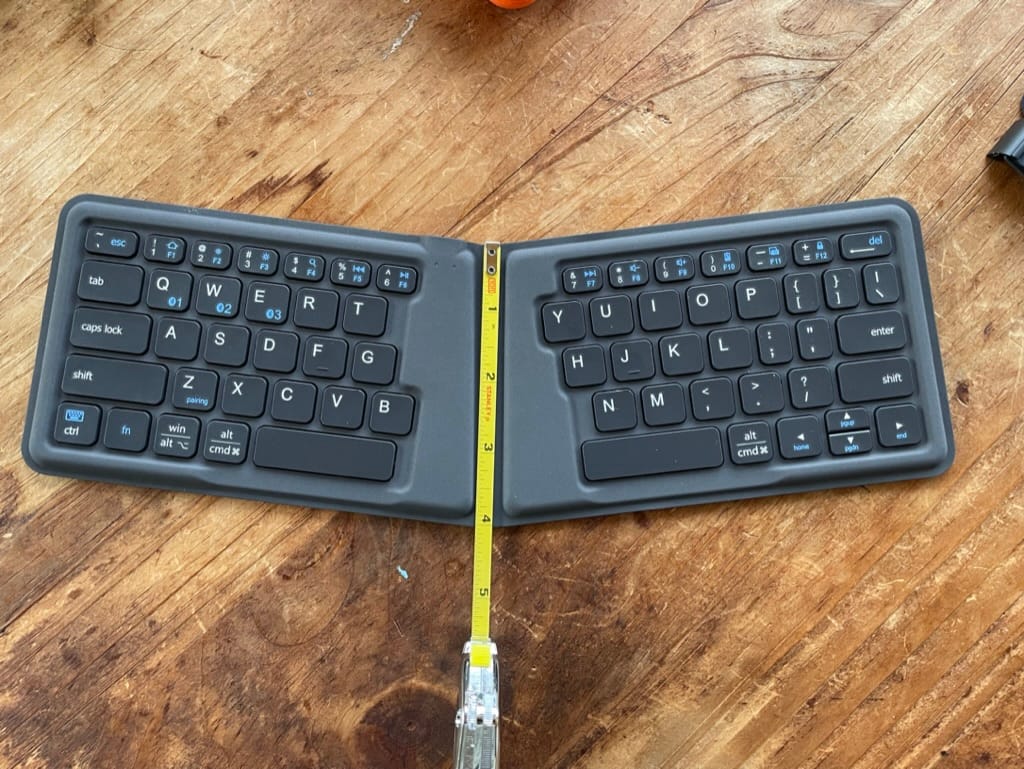
I found the iClever and was pretty impressed right from the start. It’s super slim, and it folds in half to make it a very compact travel partner. Despite all that the keys are pretty good, and feel almost as good a MacBook keyboard.
After longer term repeated use, I also came to find the Bluetooth connection to be reliable, and the battery to be long lasting. The split nature of the keyboard also made it a lot more comfortable for me, it separates the halves of the keyboard enough that I don’t feel like my shoulders have to squish to get my hands on it.
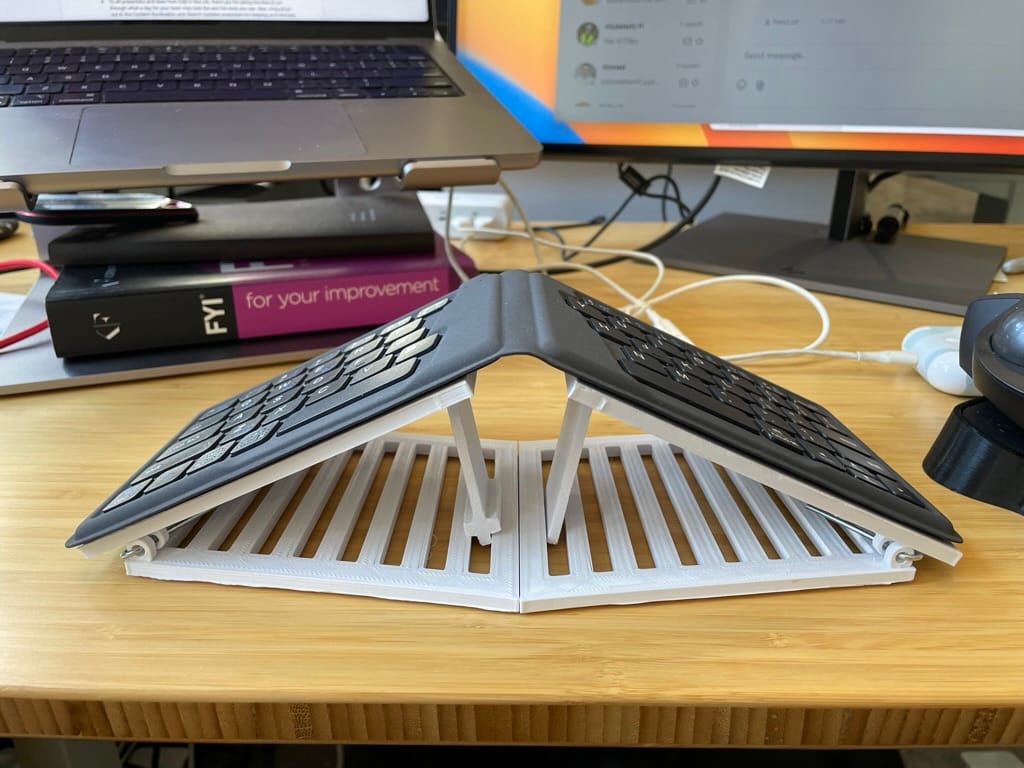
Tenting is where things got more complicated. The keyboard folds in half, and it can fold in a such a way that you could tent it, there just aren’t any pre-made accessories that you can buy. This is where I got in to 3D printing. The first attempt I made was a rigid structure, and the second attempt was a folding tent kit that allowed you to vary the height.
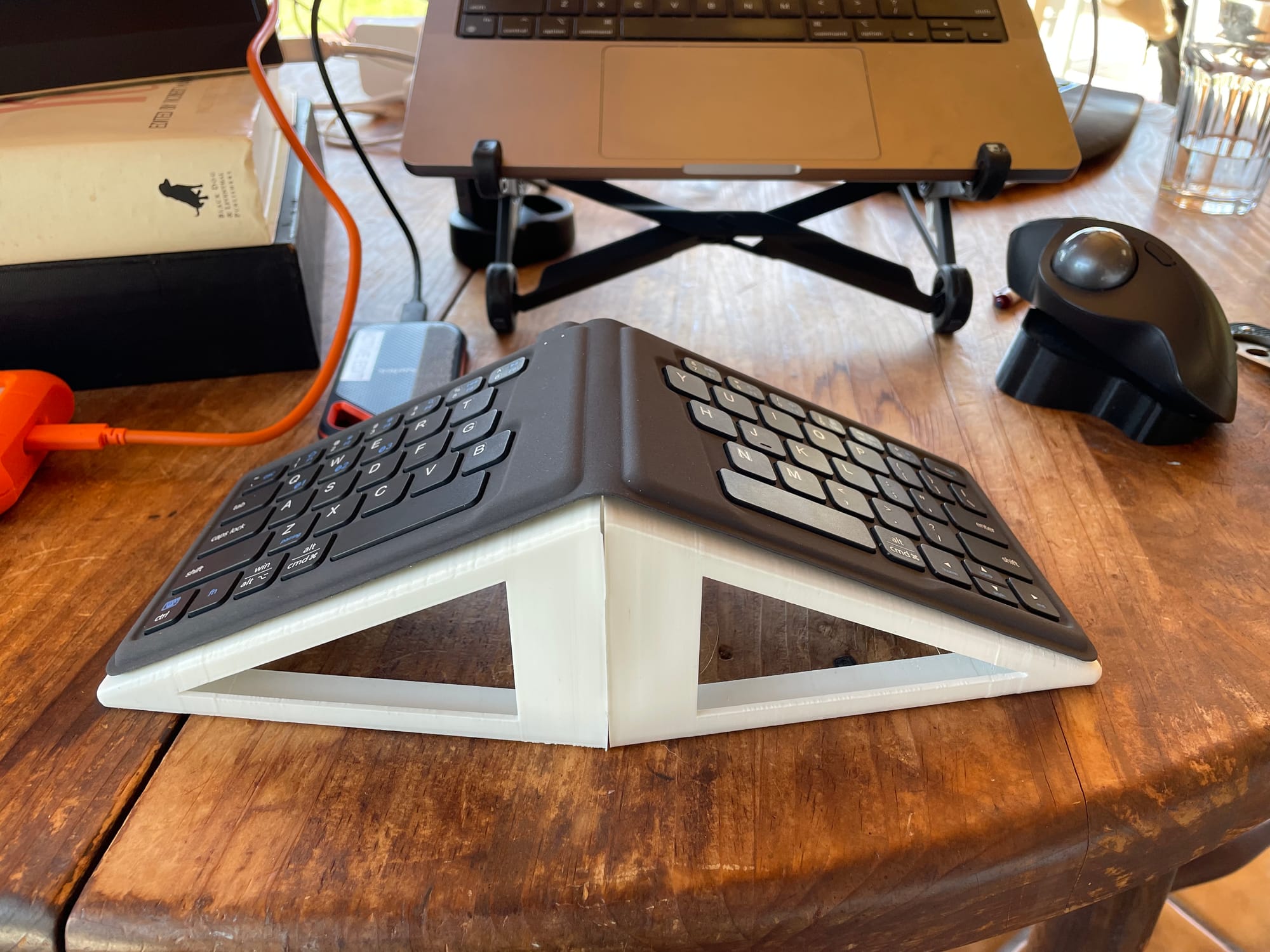
While these structure work ok, things get even trickier when you try to add in wrist rests. I used these off the shelf split wrist rests and pads, but it’s not as stable as built in or custom made options. I did end up cutting the wrist rests down to make them slimmer and fit better on the table.
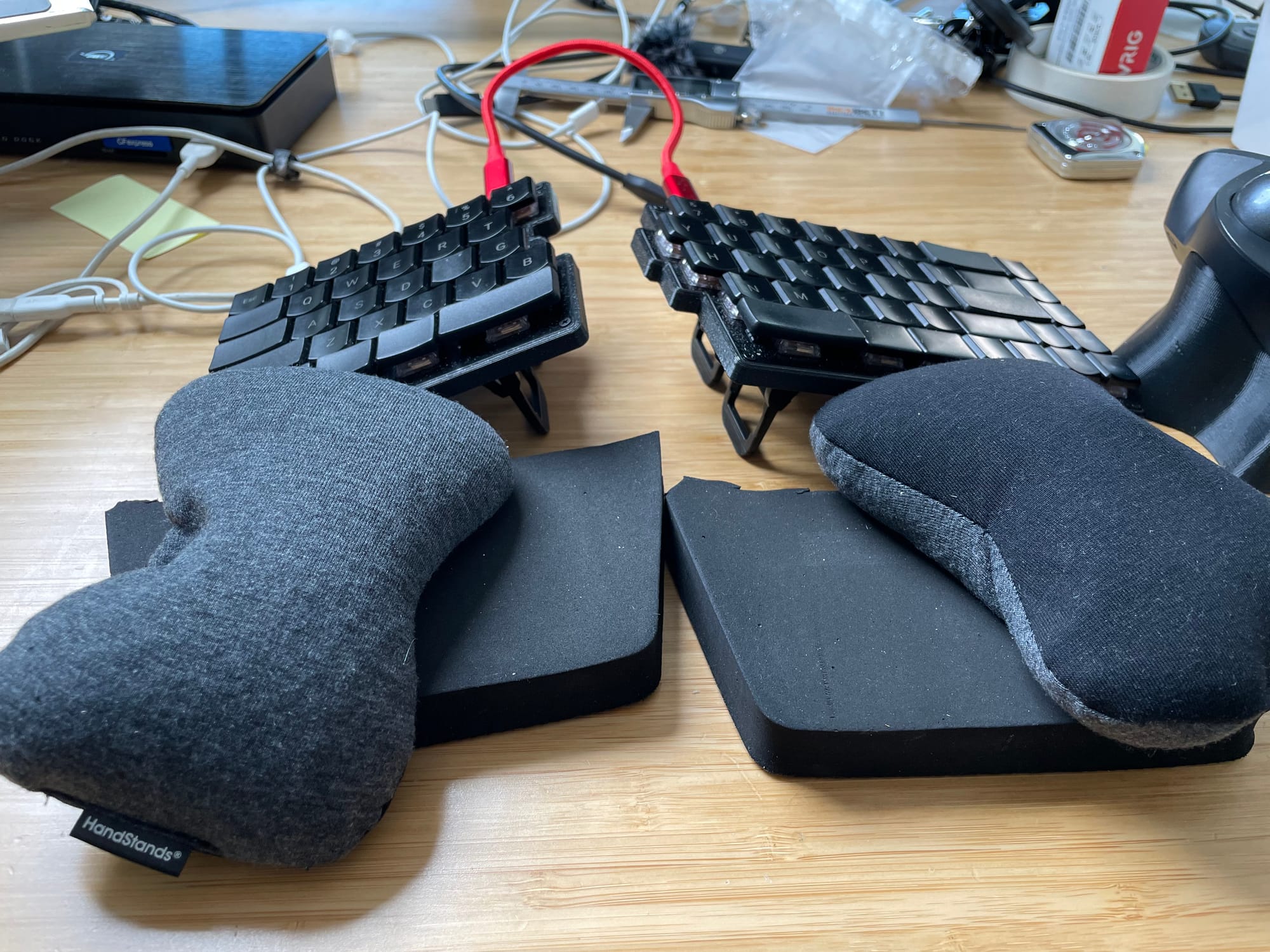
Overall this is a great travel option and a decent desktop option for the price.
Epomaker Feker Alice
I stumbled across this keyboard on Amazon’s, and for the price it looked like it was worth testing out.
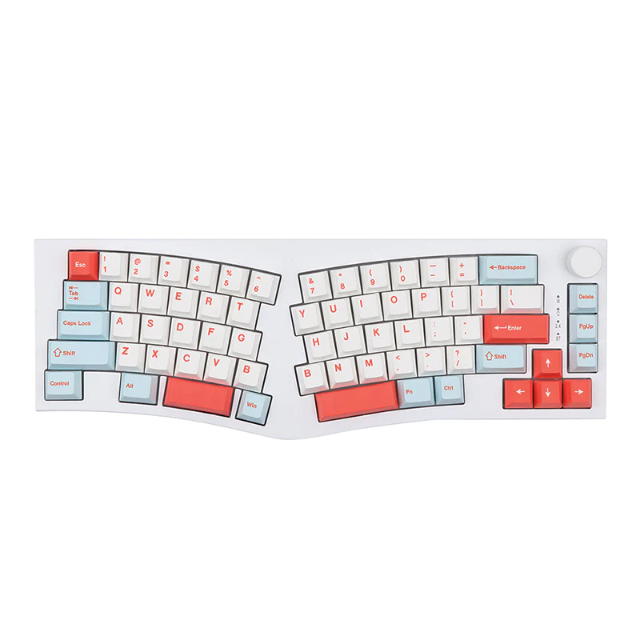
The thing that jumped out immediately was the build quality. This thing was heavy, and the keys felt really nice and made a good sound (and looked good). I also liked the presence of the knob on the keyboard, and could see a lot of applications. The split shape was great and felt really comfortable.
So, why didn’t I keep this keyboard? First, the lack of tenting flexibility. I didn’t mind that it wasn’t a full split keyboard, but I didn’t like that it was permanently going to be flat with no real tenting in it. Second, and this is more of a personal preference, but I found that the full size mechanical keyboard with regular switches just had too much travel for me. Over longer typing sessions I found the switches too hard to push, and the travel to be much more fatiguing. I think I’ve just spent so much time typing on a MacBook, and I’ve become accustomed to minimal travel.
Keebio
So I set out to find a true split keyboard that I could tent, that had low profile keys and less travel than a traditional keyboard with MX switches.
While there were other options out there, they were expensive or they didn’t have a traditional keyboard layout. Enter the Keebio Cepstrum, which has traditional layout, low profile keys, fully split, and fully customizable.
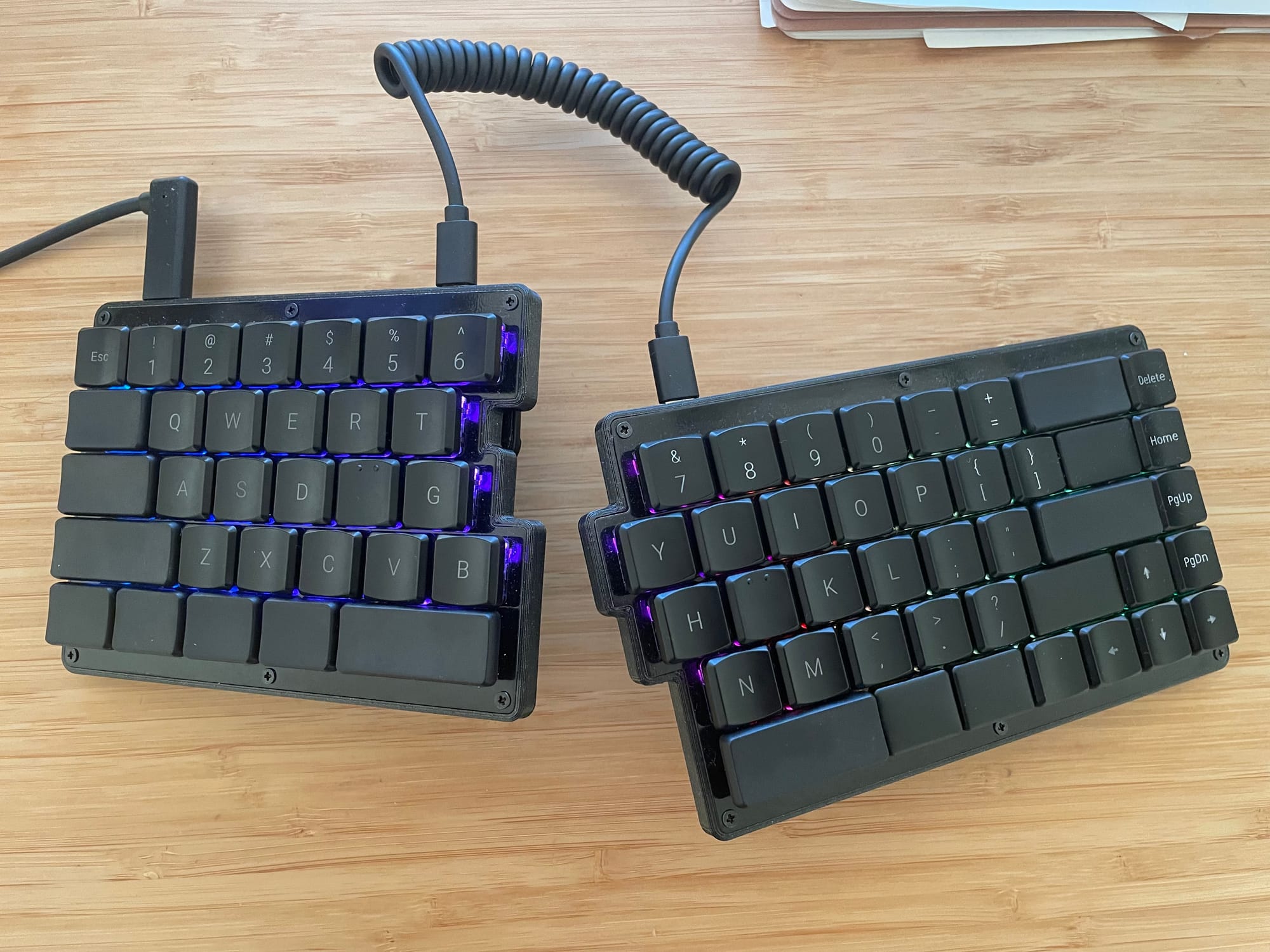
Right from the start, the major downside is that there isn’t a wireless version. I’ve begun to accept this limitation because there just aren’t many options out there that have it all, wireless in particular.
Having two fully split keyboard halves is nice, and gives you a lot more flexibility than the previous options I’ve used. Despite that, I’ve found over longer periods of use, I tend to position the two halves quite close together, which doesn’t take advantage of the ability to separate the halves.
The low profile switches are a lot more comfortable for me than full MX mechanical key switches. The Cepstrum uses Kailh low profile switches. I got the Kailh Choc Low Profile Brown switches when I purchased the keyboard, and I ended up ordering some Kailh Transparent reds of AliExpress to reduce the amount of pressure needed to push the keys (from 50g to 35g).
The build quality on this keyboard is really good, and the setup process was super easy and fast. For someone who’s never used a fully customizable keyboard, it was surprisingly easy.
When it comes to tenting I came across the same issue as previous choices, there’s no out of the box premade tenting kits. After a ton of research in the keyboard forums on Reddit and on Amazon, I finally came across my own solution to the problem, mini laptop stands from amazon.
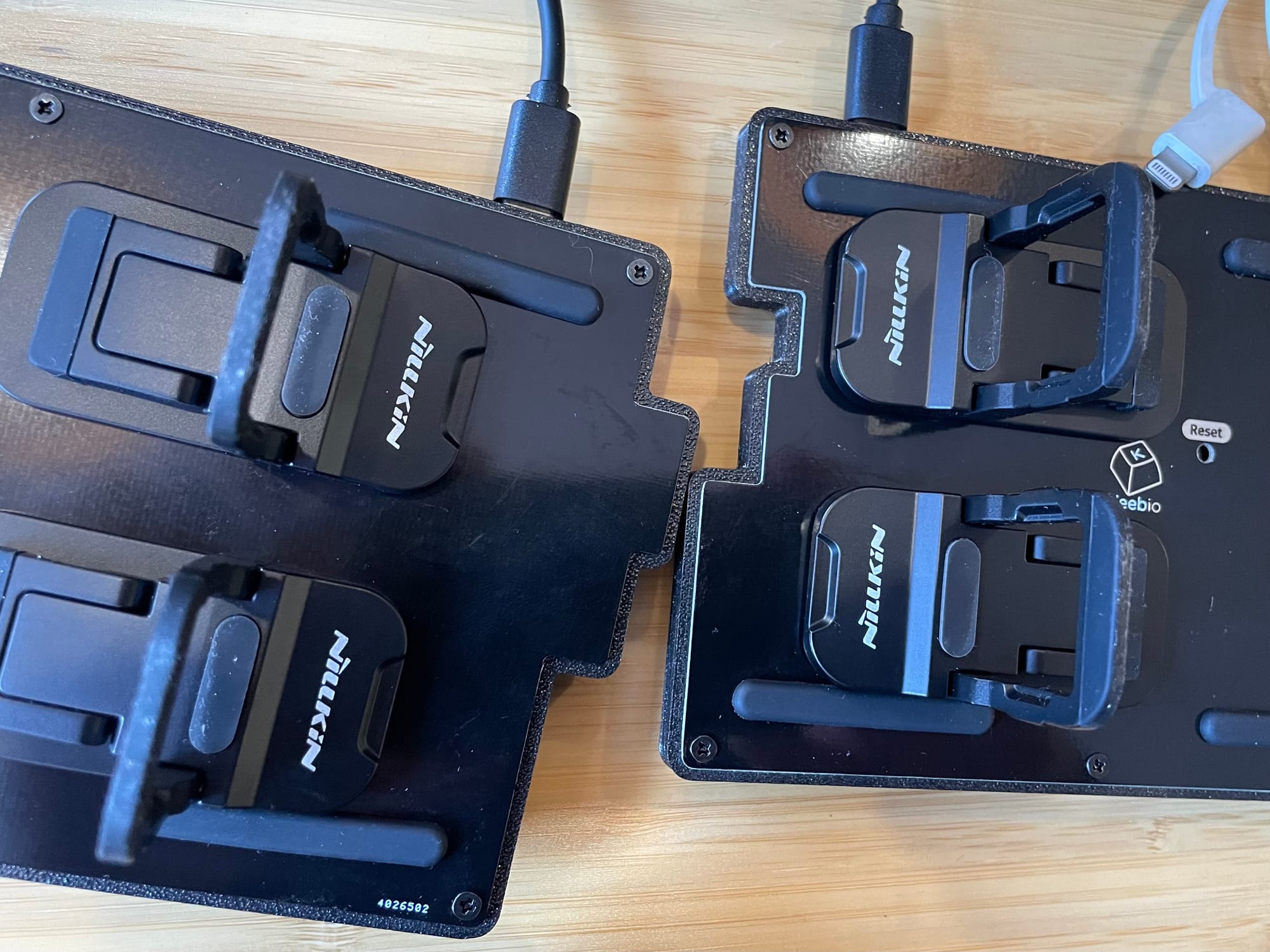
For the wrist rests, I used the same setup as above.
The last little nit picky thing that I have with this keyboard is that I wish it were a touch slimmer and closer to the surface of the desk. Yet again, I think I'm just used to MacBook keyboards that are super super low profile, and I find myself preferring that.
Conclusion
So I’ve found a decent alternative to the Sculpt, the Cepstrum is a great everyday keyboard and with some effort you can make it more ergonomic that most other keyboards.
I’m still surprised that there are so few options and that it's taking this much effort to find a setup that addresses my needs. I don’t know if other people just don’t feel any pain from working at a desk all day, or I’m just particularly sensitive? But I’m shocked that there aren’t more options on the market for modern knowledge workers.